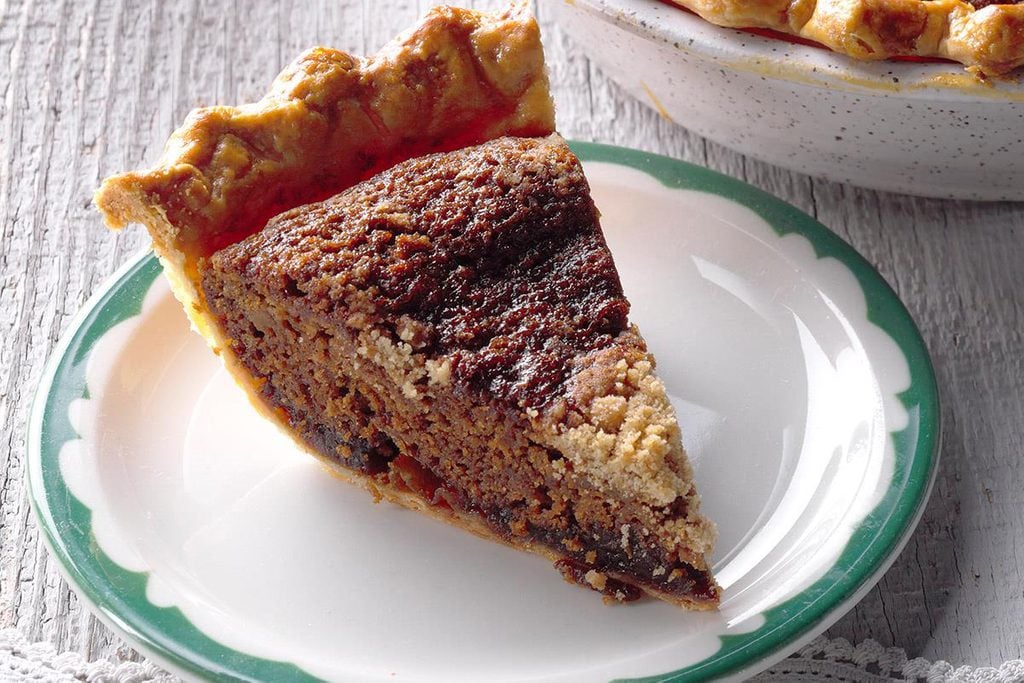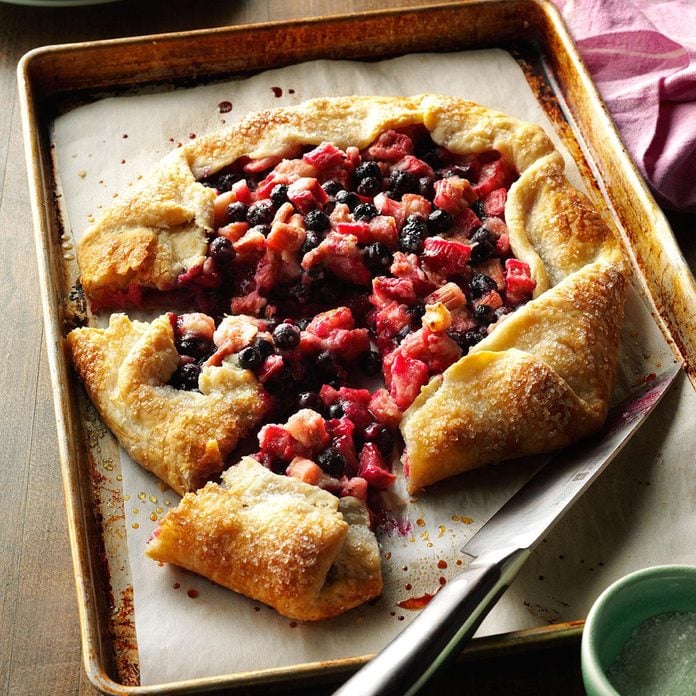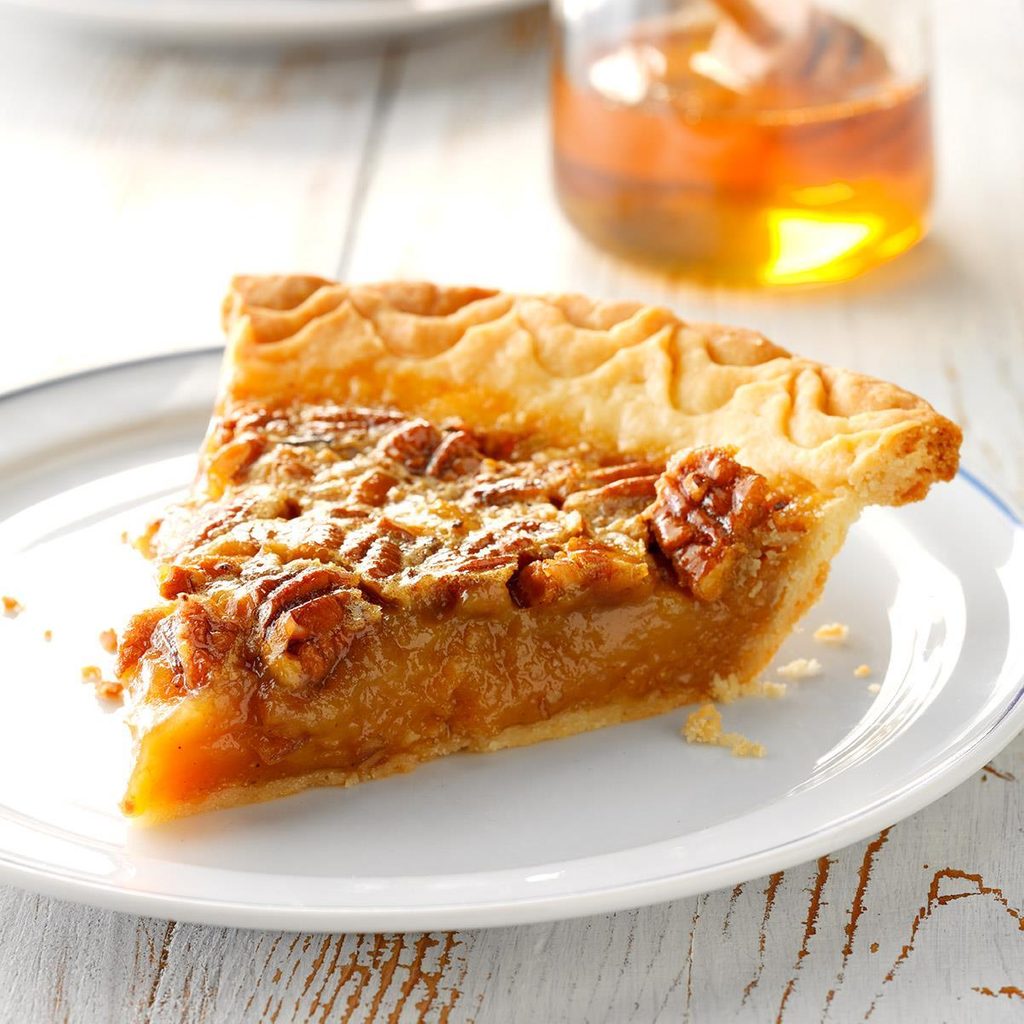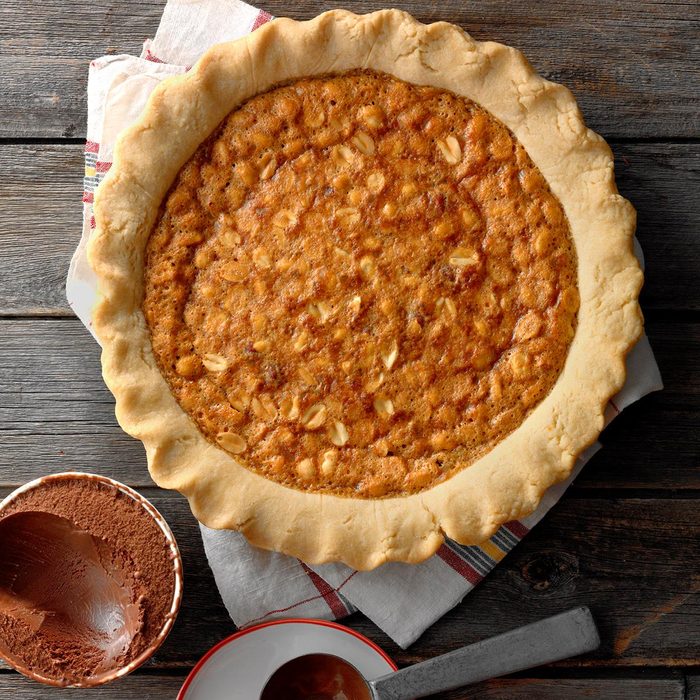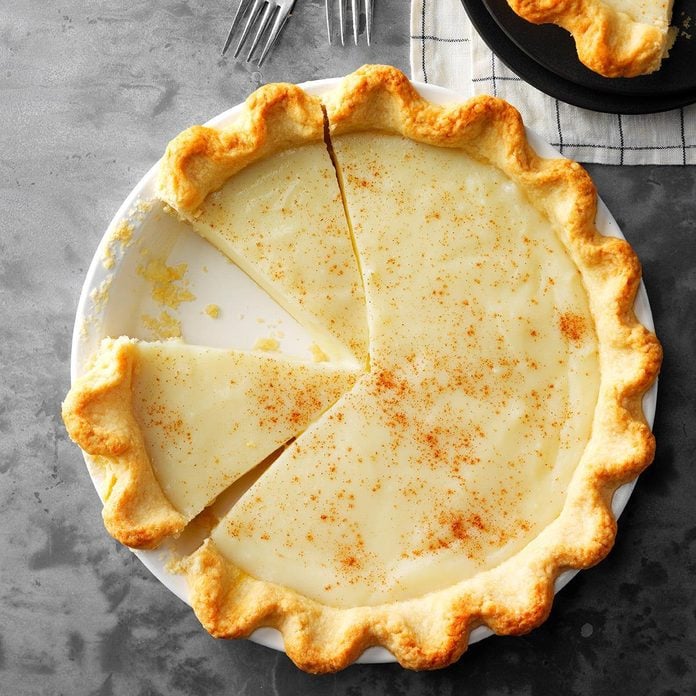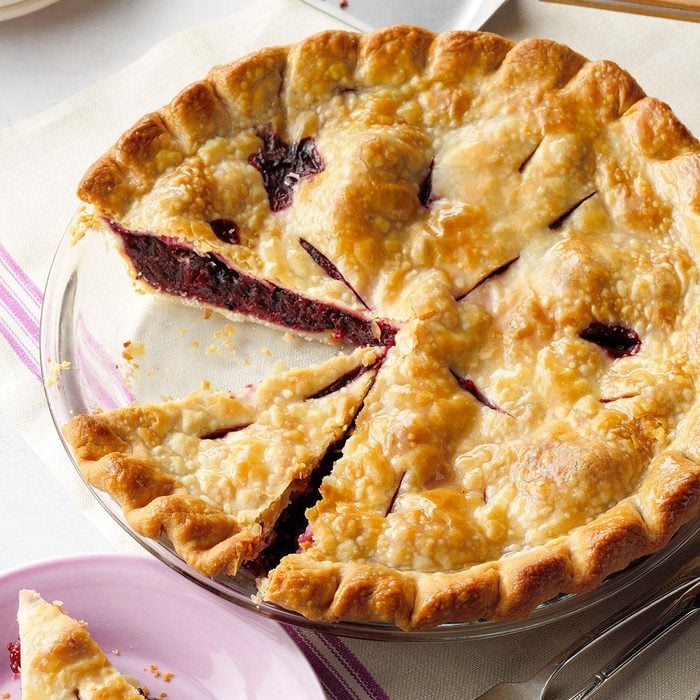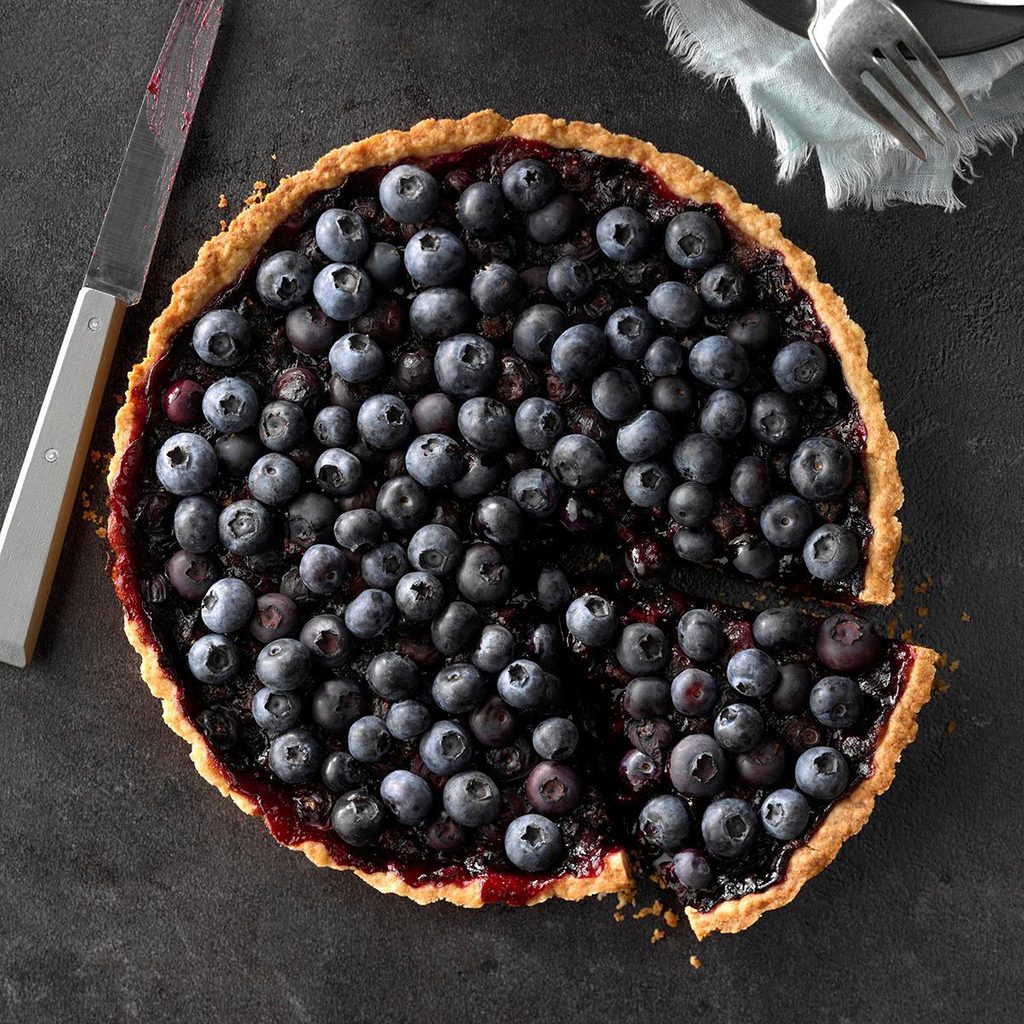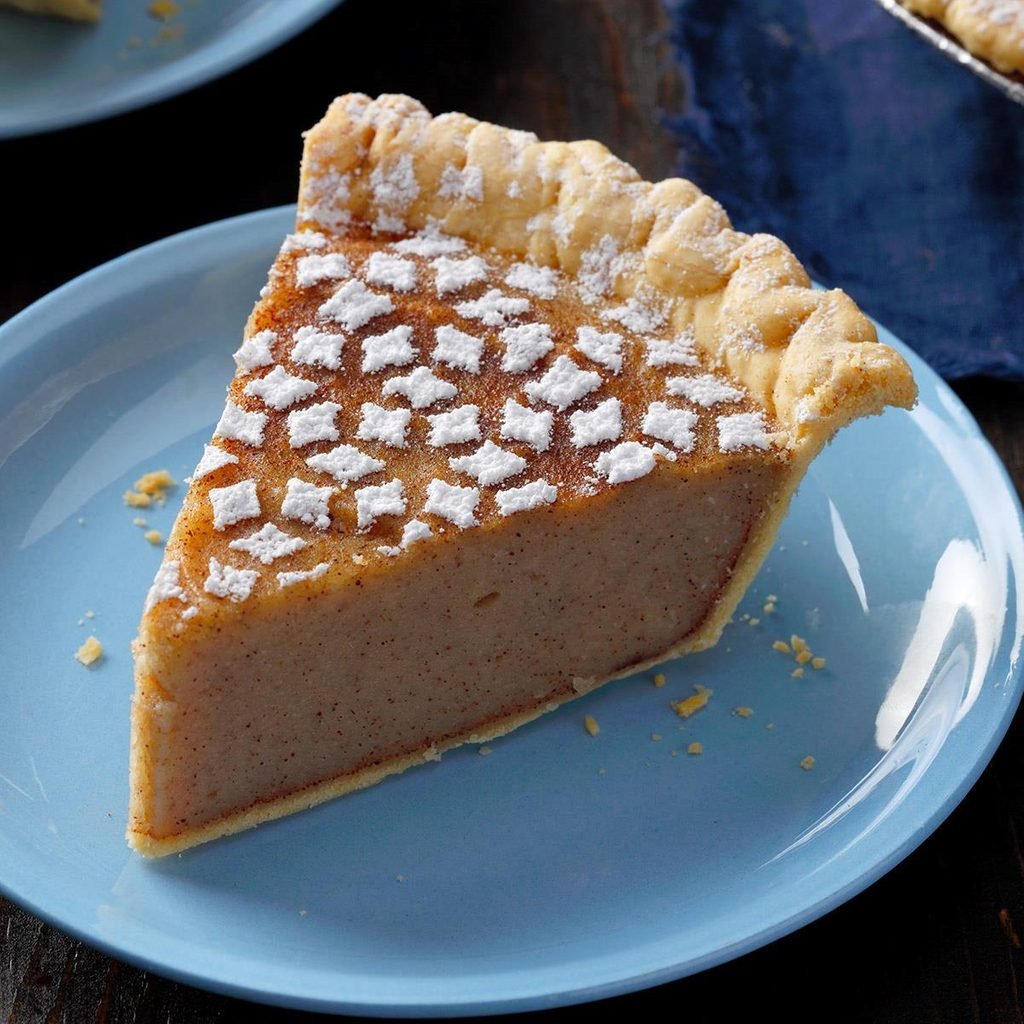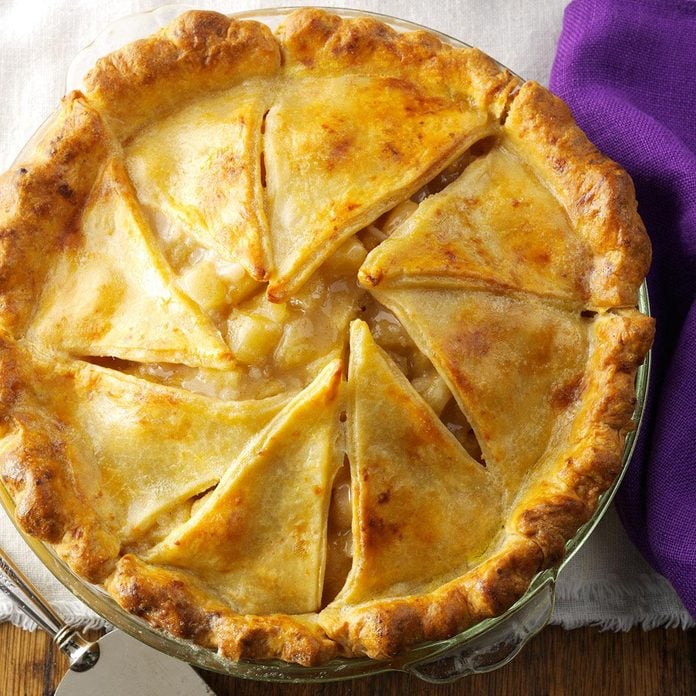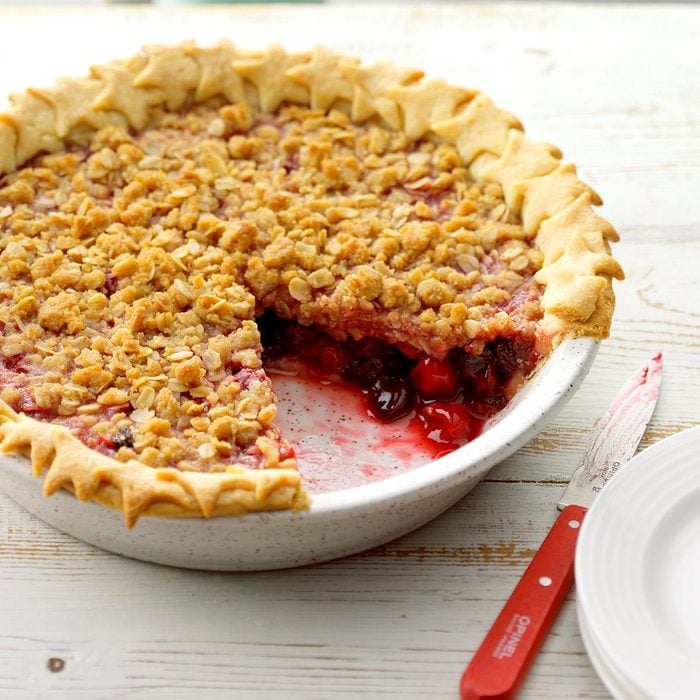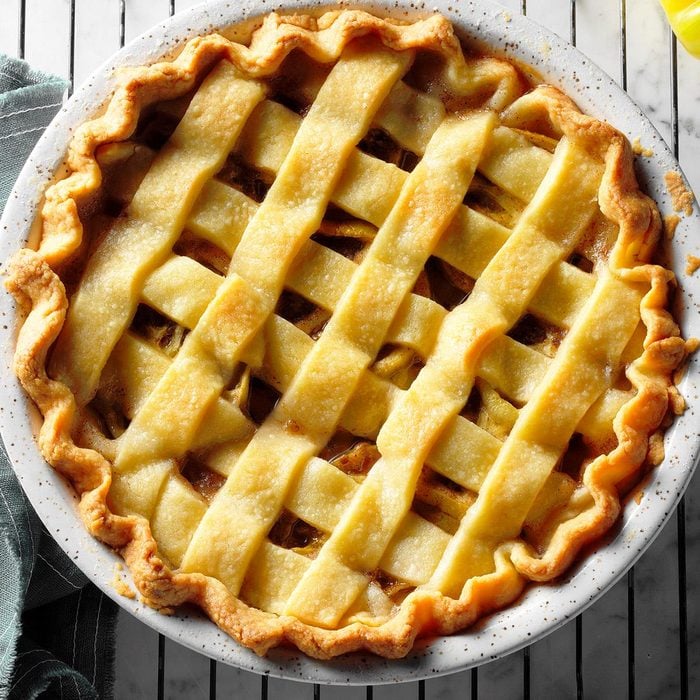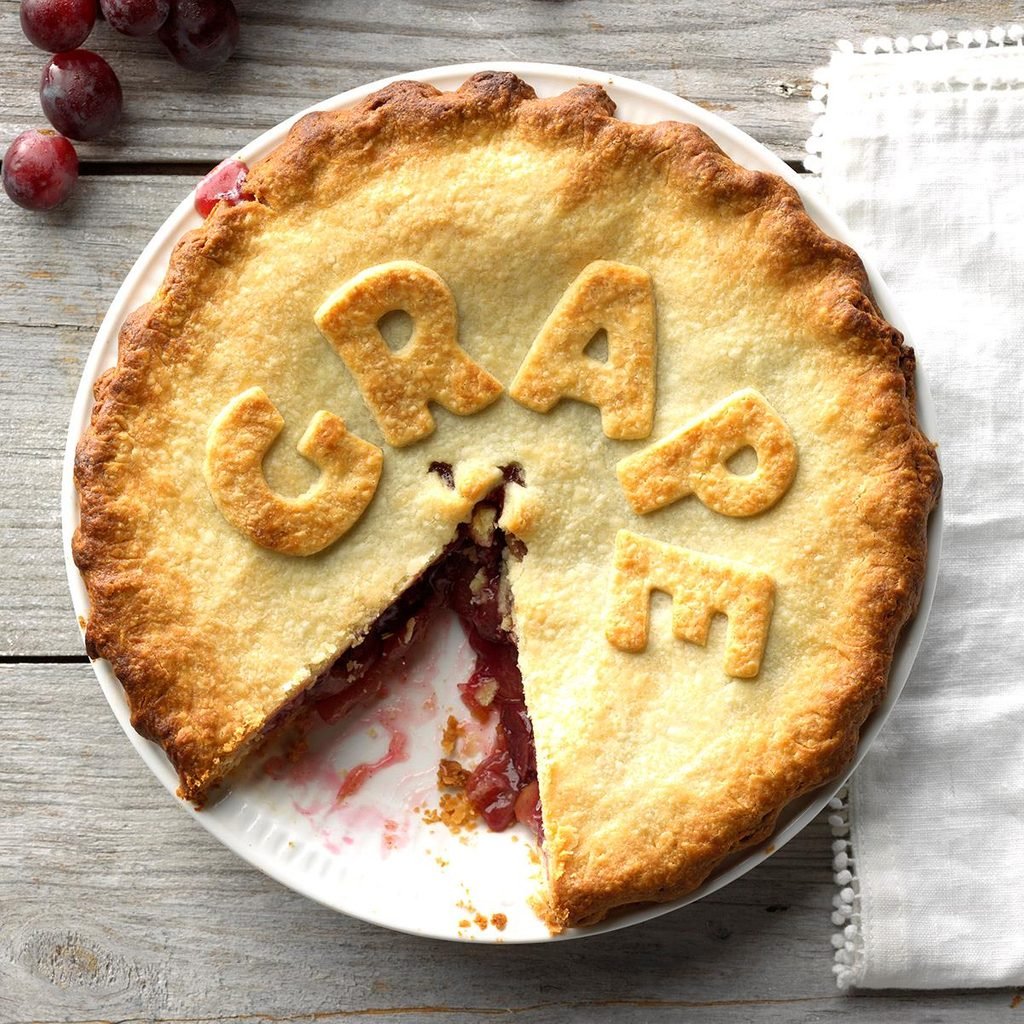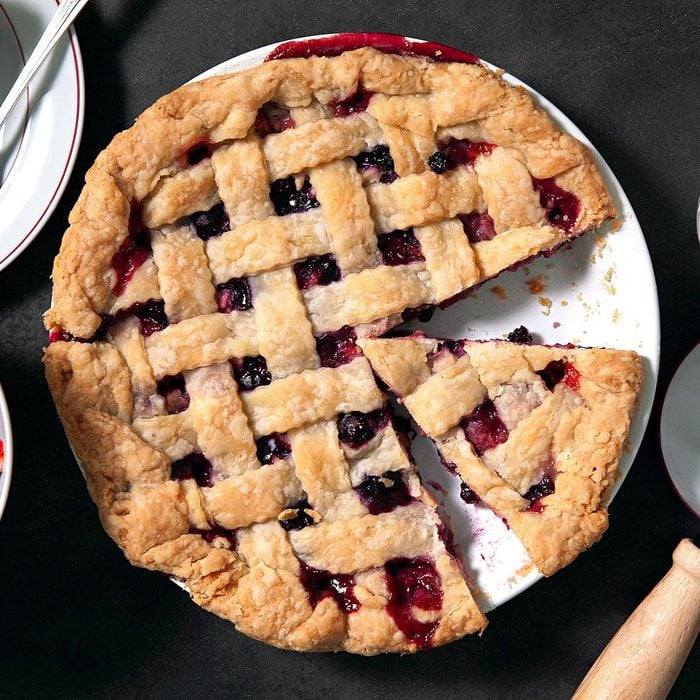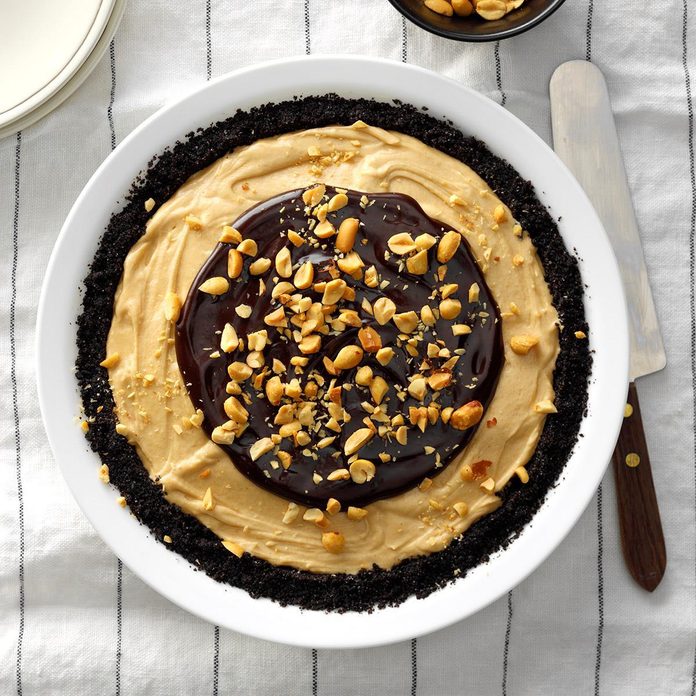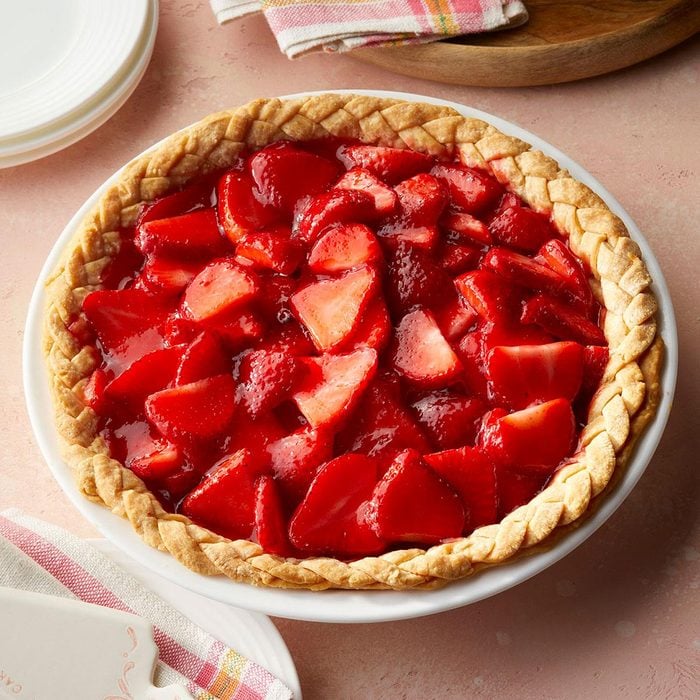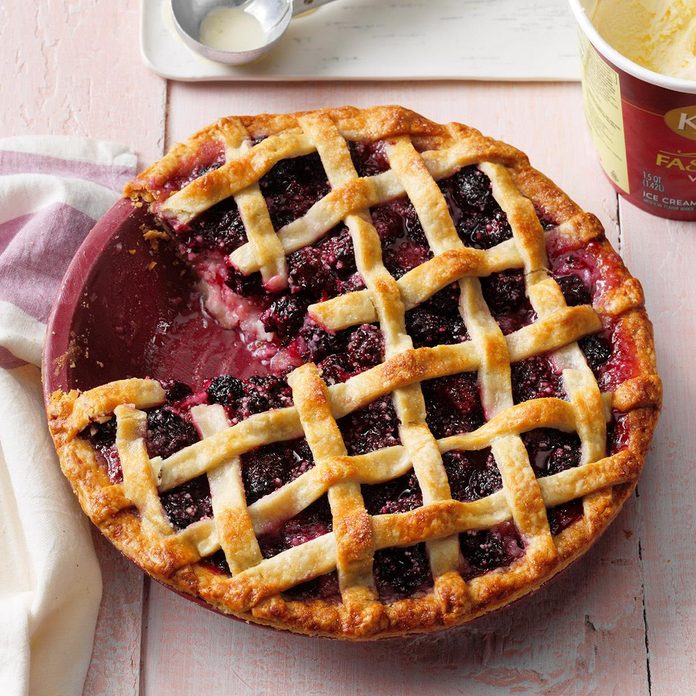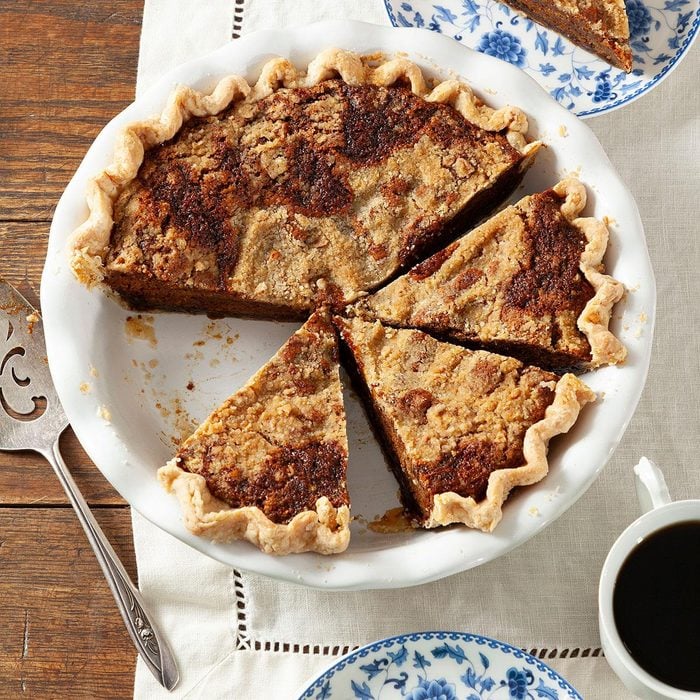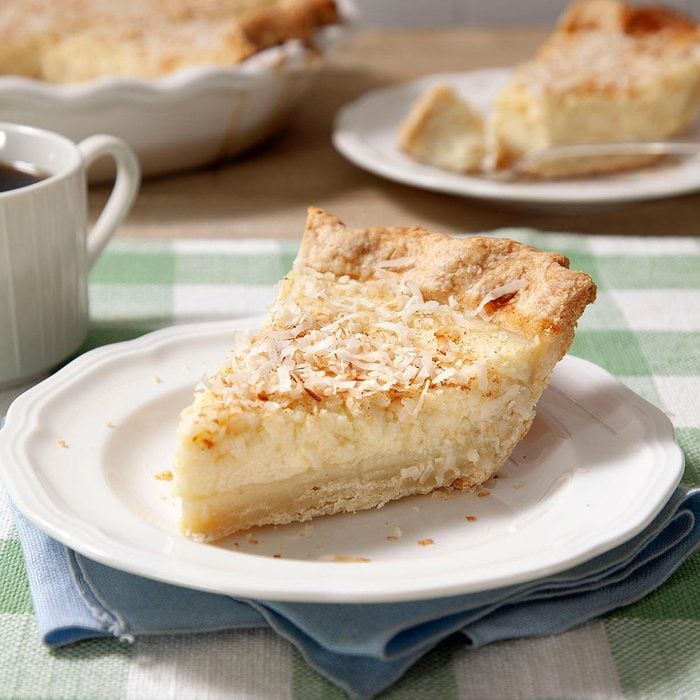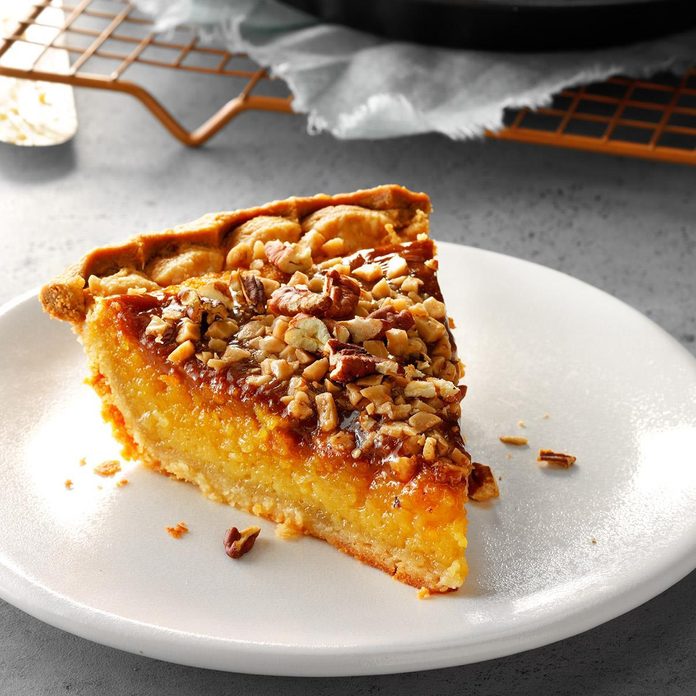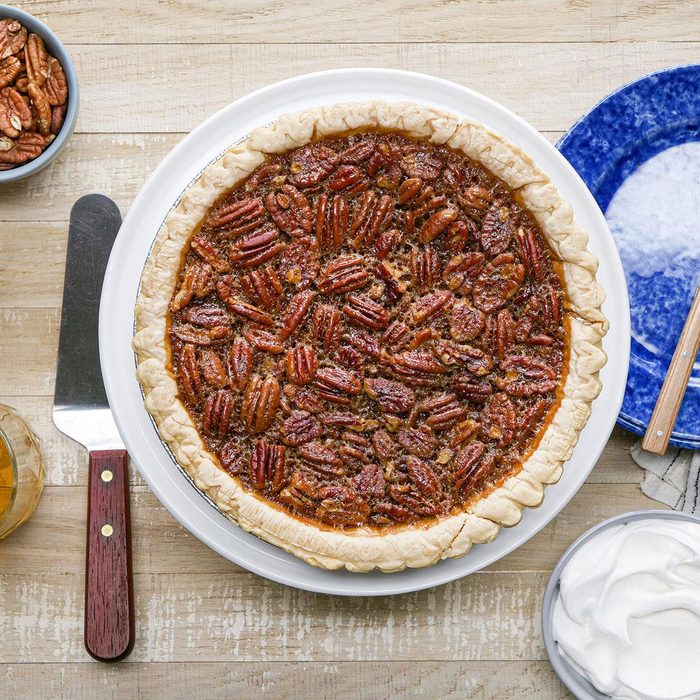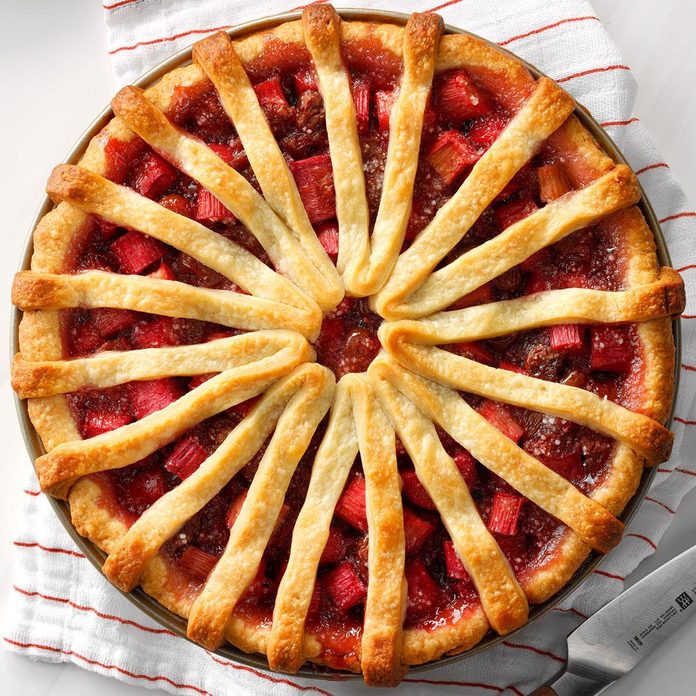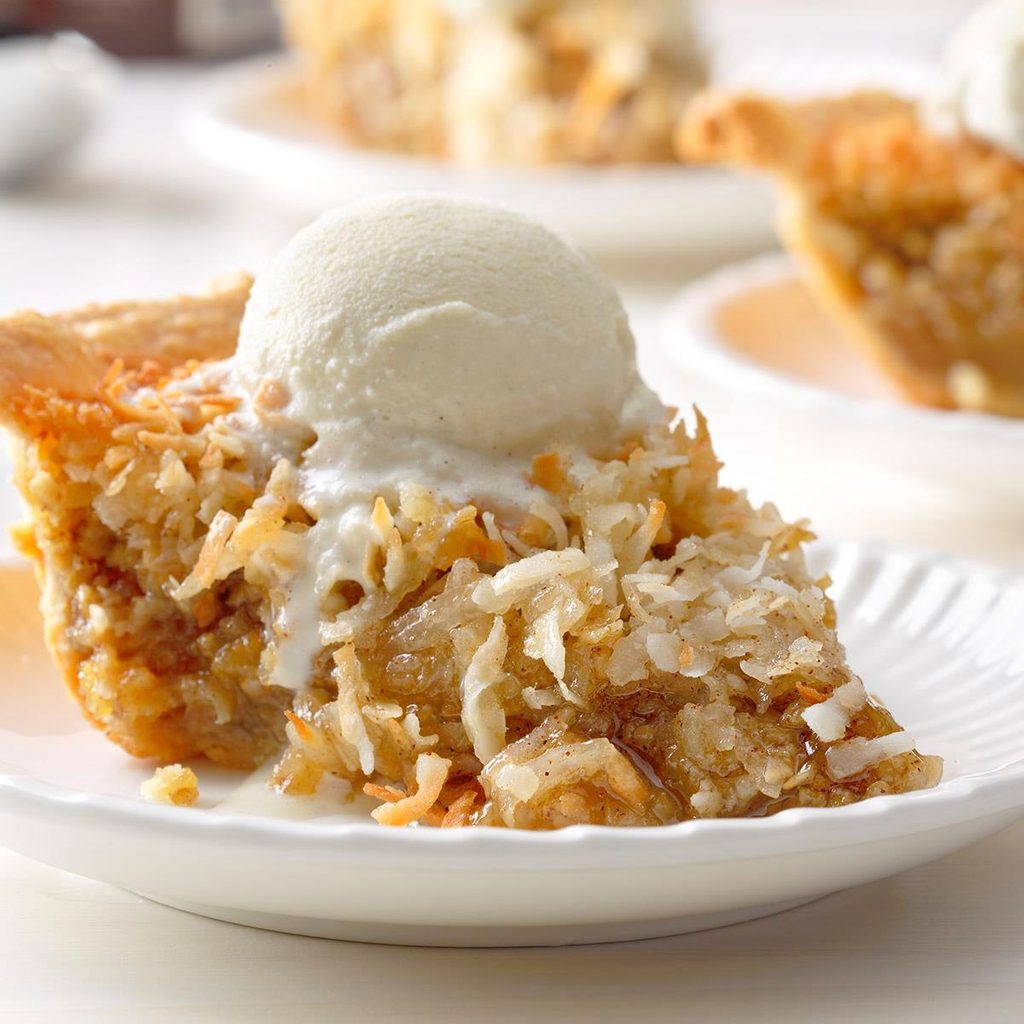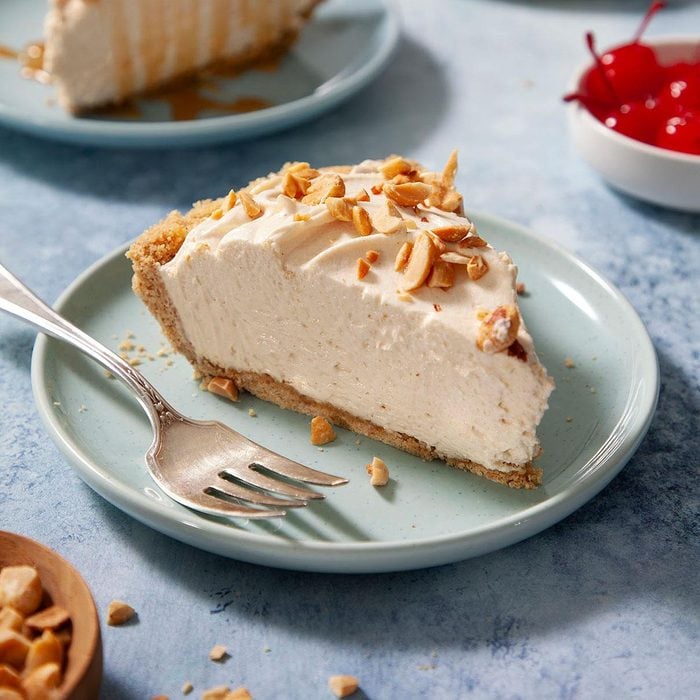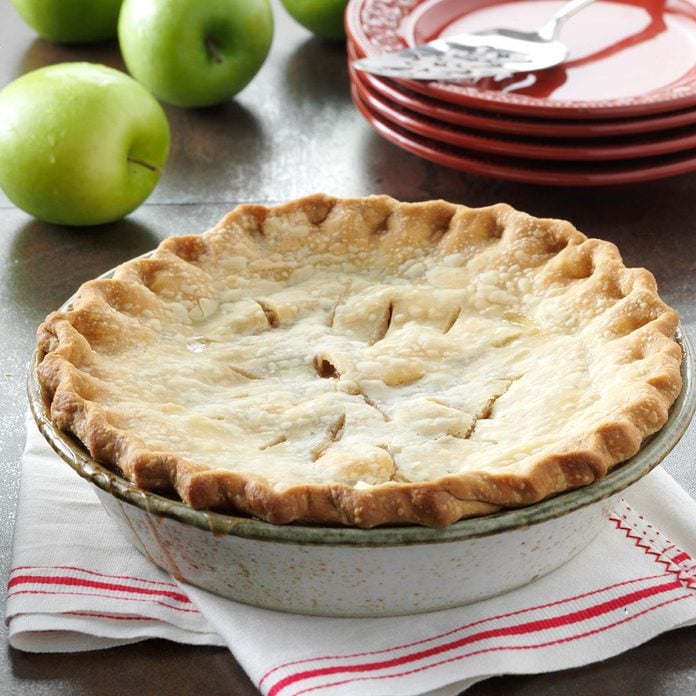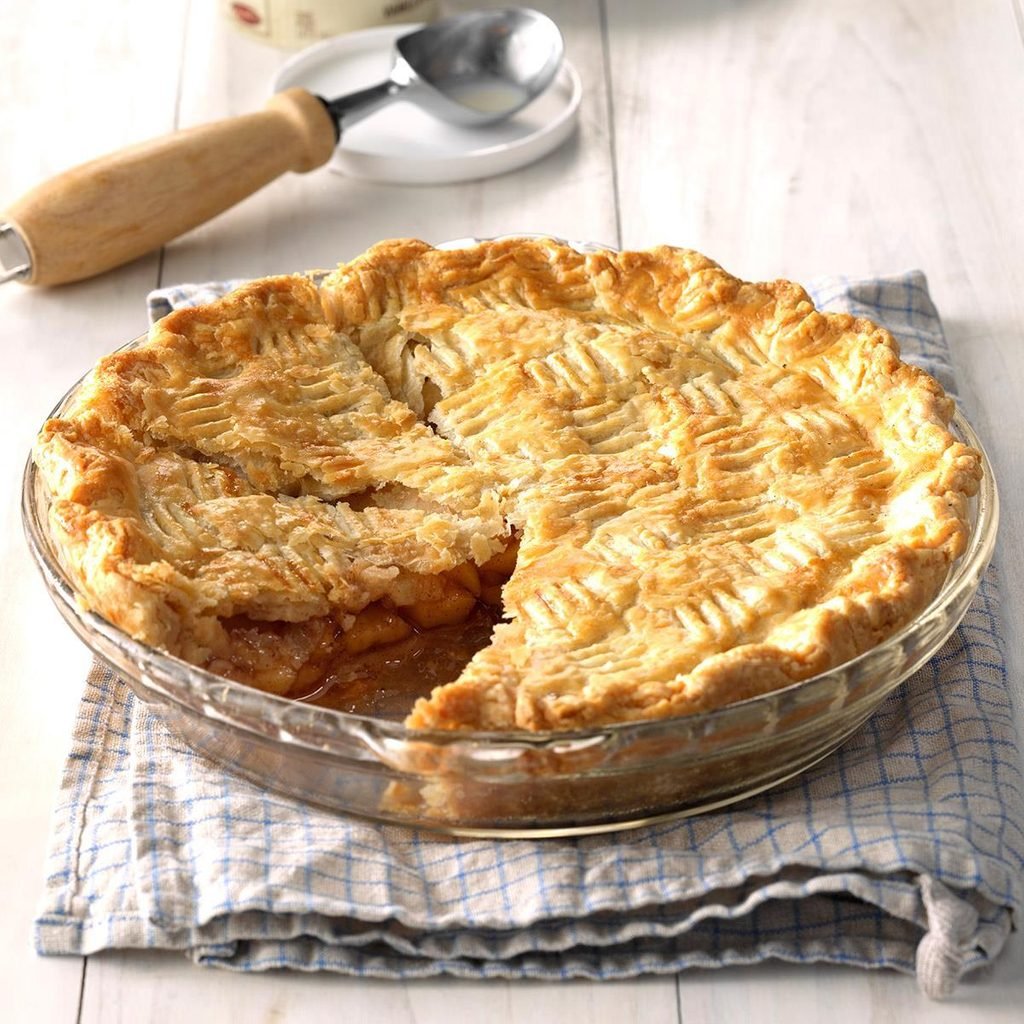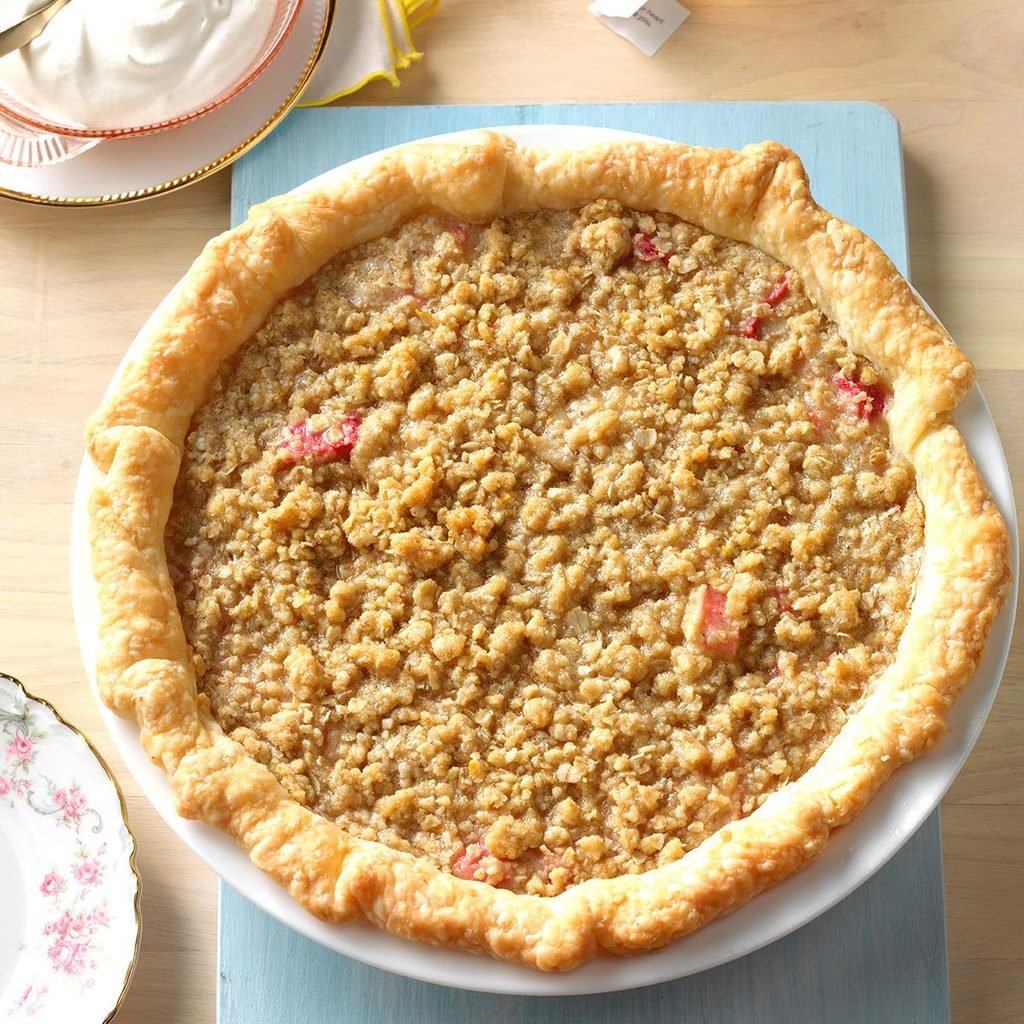Americans sure do love pie! In all 50 states, bakers have created their own classics—rich regional history expressed in a delicious dessert. So, which
pie recipe is tops in each state?
Alaska: Blueberry Rhubarb PieRhubarb and berries are big in Alaska because they grow there! In the early 20th century, Henry Clark—the Rhubarb King of Alaska—offered Gold Rush-ers a rare taste of fresh produce. Choose any berry you like—Alaska is home to nearly 50 varieties (most of which are edible).
Arizona: Lemon PieSpanish settlers brought citrus to Arizona in the 18th century; today, Arizona is one of only four citrus-producing states and is second only to California in lemon production.
Colorado: Rocky Road PieWe picked Rocky Road for the mighty Rockies! Legend has it, ice-cream maker William Dreyer used his wife’s sewing scissors to cut marshmallows to size for the original batch of ice cream.
Connecticut: Honey PieHistory’s first recorded pie recipe was for a rye-crusted goat cheese and honey pie, published by the Romans. Today, honey pie’s flavor depends on the honey used, and Connecticut produces delicious honey. Use local honey, and your pie will have the flavor of your region—wherever that may be!
Florida: Key Lime PieThe Florida Keys gave the Key lime its name, but a hurricane wiped out the orchards in 1926. Nevertheless, the famous pie is still closely identified with the Sunshine State. Legend has it, the first Key lime pie was made on a boat, from just Key lime juice, egg yolks and sweetened condensed milk.
Georgia: Peanut PieDespite its peachy nickname, Georgia's state crop is actually peanuts. There are thousands of peanut farmers in Georgia, but former president Jimmy Carter is probably the most famous. (
Psst: President Thomas Jefferson farmed peanuts, too!)
These
peanut butter desserts are for serious fans ONLY!
Idaho: Huckleberry PieThe fiercest pie fight might be between Idaho and Montana—both claim huckleberry as their own. It makes sense: The delicious berry has never been domesticated, must be harvested by hand, and only grows in northern Idaho and Montana.
Illinois: Pumpkin Pie
This distinctly American pie was created when European settlers adapted their traditional squash pie to the New World pumpkin. The pie is loved and baked throughout the United States, but Illinois nabbed it as their official state pie in 2015.
Here are 50+ more
pumpkin recipes you'll love.
Indiana: Sugar Cream PieThe Sugar Cream Pie is also known as the
Hoosier Sugar Cream Pie, in case anyone was confused over just who it belongs to! This pie traces its origins to the Indiana Amish and Shaker communities in the 1800s, and it was named the official state pie in 2009.
Iowa: Sour Cream Raisin PieIf you’re from Iowa, you’ll definitely know this pie. It’s a classic of straight-from-Grandma’s-kitchen cooking, with generations of cooks reading from the same tattered recipe card. Soak the raisins so they’re plump and juicy, fold them into a tangy and sweet custard filling. Delicious!
Kentucky: Bourbon Chocolate Pecan PieThis luscious mix of nuts, bourbon and chocolate is traditional eating on Kentuky Derby Day—but you can’t call it a Derby Pie. The name is trademarked by Kern’s Kitchen, home of the official Derby Pie. Some restaurants get cute, though, with names like “Derby Dessert” or “Not Derby Pie.”
Put these Kentucky classics on your
Derby buffet, too.
Louisiana: Blackberry PiePeople have eaten blackberries for 2,500 years—we have scientific proof from a prehistoric find in Denmark—and the succulent berries are found all over the world. In Louisiana, “Pick Your Own” farms bustle from mid-May through the end of July.
Maine: Blueberry PieMaine is justifiably proud of its wild (lowbush) blueberries, which are smaller, brighter and have a more intense flavor than commercial (highbush) kinds. Maine has more than 60,000 acres of the blueberries, which grow on creeping bushes, and blueberry pie was named the official state dessert in 2011.
Maryland: White Potato PieWho says sweet potatoes are the only potatoes for pie? Not the folks in Maryland! Geo. W. Arnold, on West Fayette Street, Baltimore, was advertising Potato Puddings (baked in a crust, so yes, pie) back in 1856. Marylanders have been making this special treat at least that long.
Massachusetts: Apple Pie with Cheddar CrustOther states may have claim to apple pie, but the Bay State gets a special shout out because of the special spin New Englanders put on their apple pie. New England apple pie must have cheddar—either slices on top, on the side or baked into the crust. If you liked this recipe, then you should try
apple pie with cheese.
Michigan: Cherry PieTraverse City, Michigan, is known nationally as “The Cherry Capital of the World,” while Eau Claire, Michigan is known as “The Cherry Pit Spitting Capital of the World.” There are more than 3.5 million tart cherry trees in Michigan. Every year, each tree can produce enough cherries for 28 pies.
Another food Minnesotans love?
Hotdish.
Mississippi: Mississippi Mud PieNamed after the muddy, rich ground along the banks of the Mississippi River, the Mississippi Mud pie comes in various forms—but all of them include chocolate. Lots and lots of chocolate!
Missouri: Butterscotch PieA staple from the Heartland, Butterscotch Pie is another in the family of custardy, pudding-y pie. In fact, many modern cooks skip to the finish and use a packet of butterscotch pudding. The custard for this pie is made from scratch, and is topped with the thing every butterscotch pie must have: meringue!
Nevada: Chocolate Cream PieNevada is home to Las Vegas, famously known as Sin City. And is there any pie more sinfully delicious than chocolate cream? You can make it with instant pudding, sure, but if you make the custard from scratch, as in this one, it’s simply heavenly.
If you're a chocoholic, you'll want these
chocolate recipes, too.
New Hampshire: Maple Syrup PieNew Hampshire produces close to 90,000 gallons of maple syrup annually; how better to celebrate it than with this decadent pie? Use bold syrup (either dark amber or Grade B syrup—you’re not looking for a delicate maple taste) and be sure to let the pie cool completely so it sets!
New Jersey: Green Tomato PieThere are two types of green tomatoes, for which New Jersey is famous: those that are green when ripe and unripe red tomatoes. Both can be used in baking. Ripe green tomatoes will often have vertical stripes or other color variations, will feel soft when pressed, and will taste much like a red tomato. Yum!
New York: Grape PieThe Finger Lakes region of upstate New York is considered the grape capital of the world. An estimated 20,000
grape pies are sold during the annual Grape Festival, which has been held in Naples, New York, since 1961.
North Carolina: Sweet Potato PieIn the South, sweet potato pie beats pumpkin hands down—and the people of North Carolina get to claim the sweet potato pie because they produce up to 60 percent of the nation’s crop. In 2016, the Tar Heel State farmed 95,000 acres of sweet potatoes—more than the next three producers combined.
North Dakota: Bumbleberry PieNo, you’re not confused. Bumbleberry isn’t a real berry—but it is a real pie! It’s a jumble of some combination of strawberries, blackberries, blueberries or raspberries, plus apples and rhubarb. Canada claims bumbleberry pie as a native invention, but North Dakotans, right across the border, have adopted it.
Ohio: Buckeye PieEven though the nuts of the buckeye tree are poisonous, that hasn’t stopped Ohio (the Buckeye State) from going buckeye mad. The buckeye pie is made of chocolate and peanut butter fillings, artfully layered to imitate the appearance of the nut—
or the namesake candy.
Oklahoma: Strawberry PieThe strawberry, the official state fruit of Oklahoma, is the only fruit that wears its seeds on the outside. Botanists consider each seed on a strawberry to be its own separate fruit; what you’re eating is actually the stem. Each strawberry has an average of 200 seeds. Who knew?
Oregon: Marionberry PieOregon is known for Pinot Noir wine, but they call their marionberries “the Cabernet of blackberries.” Oregon produces 30 million pounds of them every year, but they’re not widely available outside the region. You can use blackberries for this pie until you get your hands on the real thing.
Pennsylvania: Shoofly PieShoofly pie comes two different ways: Dry-bottom pie is cake-like; wet-bottom has a gooey custard underneath the cakey surface. Depending on whom you ask, this pie gets its name from the flies that were “shooed” away as it cooled, or from a 19th century touring celebrity, Shoofly the Boxing Mule.
Feast on these
Pennsylvania Dutch recipes, too.
Rhode Island: Coconut Custard PieRhode Island’s connection with coconuts dates back to 19th century, when whaling vessels brought them back from the tropics after voyages that could last up to three years. With custard pie already a favorite in New England, cooks quickly incorporated the exotic new food.
South Carolina: Persimmon PieIn the early 19th century, South Carolina persimmons were served dried, or made into beer. The native fruit is quite astringent, and needs to be fully ripe before achieving its sweet, aromatic flavor. Many Southerners say a persimmon can’t be picked—it’s not ripe until it falls off the tree.
South Dakota: KuchenWhile not technically pie, kuchen can’t be separated from South Dakota. According to the state’s Legislative Manual (yes, they legislated kuchen), the official state dessert is “a sweet dough crust filled with custard, which is served plain or studded with fruit…” Sounds enough like a pie to us!
Tennessee: Bourbon Pecan PieWhat makes a Tennessee pecan pie different from a regular
pecan pie? The answer’s easy—bourbon! A pie like this is where the sweet wood, vanilla and caramel flavors of bourbon (as opposed to the peaty edge of Tennessee whisky, which by law must be charcoal-filtered) scores big.
Texas: Pecan PieWhy does Texas get pecan pie? Well, Texans really love pecans. The official state tree, state nut, and state dessert—all pecan. And because official state anything isn’t big enough for the Lone Star State, San Saba, Texas is the “Pecan Capital of the World.” Yes, Texas gets it.
Utah: Rhubarb Cherry PieBecause it thrives even in cold climates, rhubarb is a favorite in cooler states (remember Alaska's pie?)—and it grows abundantly in northern Utah. Because rhubarb is so tart, it’s usually either cooked with a whole lot of sugar or a sweet fruit—here, Utah’s state fruit, the cherry, does the honors.
Vermont: Maple PieNo surprise what represents Vermont: The state leads the country in maple syrup production, tripling over the last decade to 1.8 million gallons per year. But the boom actually pales next to the 9 million gallons produced annually in the 1860s, when maple sugar was cheaper than cane sugar.
Do you know these 10 surprising
facts about maple syrup?
Virginia: Peanut Butter PieIf you’re snacking on “peanuts and Cracker Jack” at a baseball game, those peanuts are sure to be Virginia peanuts. Now grown in other states as well, the Virginia peanut is the largest of all peanut types. They’re also commonly used in all-natural peanut butter.
Washington: Apple PieWashington is the nation’s apple powerhouse, with more than 175,000 acres of orchards producing 125 million boxes—or 2.5 million tons—of apples every year. It takes between 35,000 and 45,000 pickers to harvest the crop during peak season: Apples are picked by hand, rather than machinery.
West Virginia: Golden Delicious Apple PieNow forget about Washington, the Mountain State is the official home of the Golden Delicious apple—it was first grown by Andrew H. Mullins in Clay County, in 1912. No relation to the Red Delicious, it is the mama apple for Galas, Ambrosias, Pink Ladies, Mutsus and Jonagolds.
Wisconsin: Cranberry PieOriginally called the “crane berry” (because its blossom looks like a sandhill crane), the official state fruit of Wisconsin was first harvested there in 1860; the oldest bed still active was planted 140 years ago. The Badger State now produces nearly 60 percent of the nation’s cranberries.
Wyoming: Rhubarb PieWyoming is another northern, cold-weather state that welcomed the hardy, tangy vegetable (did you think it was a fruit? Many people do!) and made it a staple for desserts. When buying rhubarb for a pie, look for medium to thick stalks; they’re the most tender.
What's a diner without pie? Here are the
best diners in every state.
